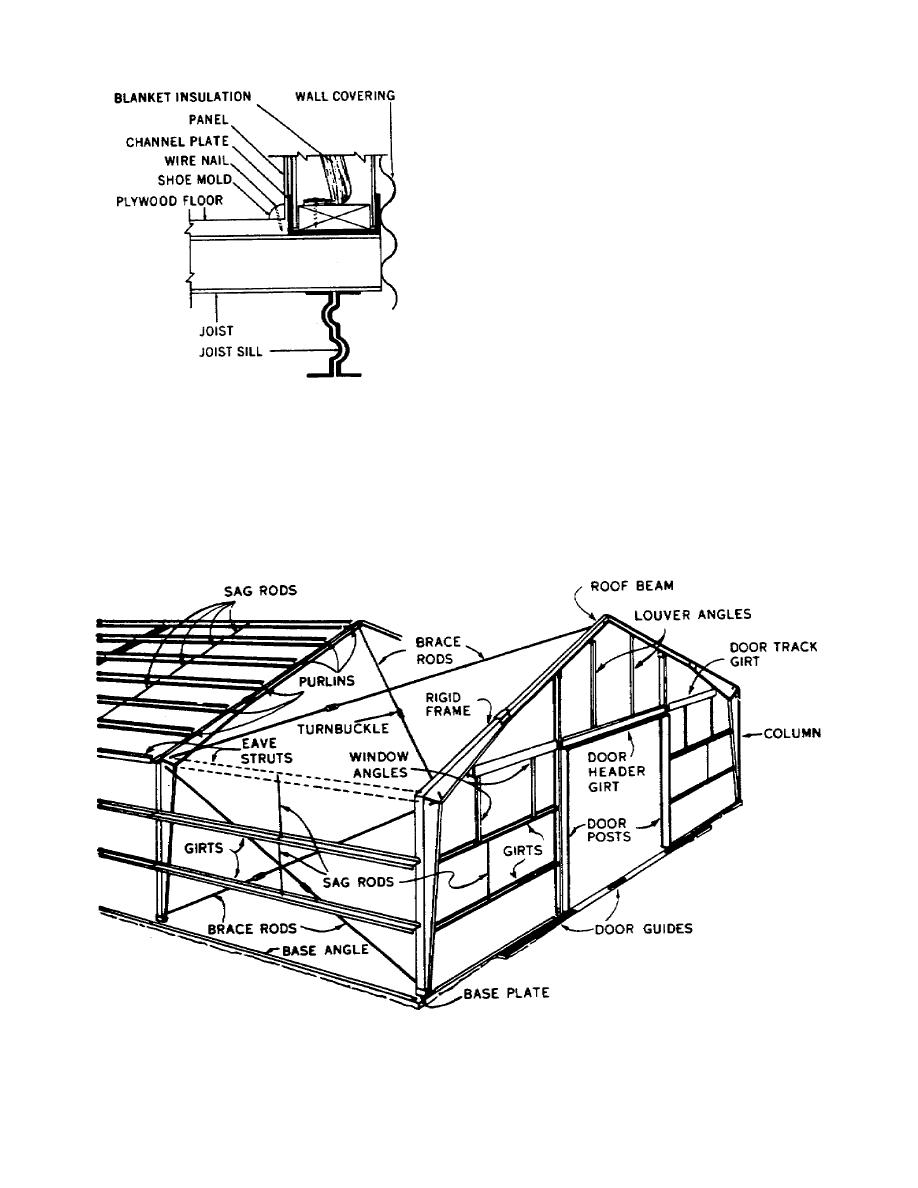
5-13. End wall posts, or door posts, extend from the
foundation to the roof beam and are bolted in place at
each end. Door framing is attached to the door posts.
The door header is fastened to the door header girt,
which extends between the door posts. A girt that
extends from column to column across the end of the
bay may also be used to secure the door header and
tracks when a sliding door is used. A base angle (90
angle) is fastened to the foundation between the columns
to provide a fastening surface for the vertical siding. The
top of the siding is fastened to an angle that is attached
to the roof beam. The eave strut provides a surface for
fastening the top of the sidewall panels.
The
intermediate fastening surfaces are provided by horizontal
girts on both end and side walls.
5-14. The sag rods, shown in figure 37, are used to
prevent the girts from sagging between the columns. Sag
rods are also used in the roof frame to help hold the
purlins in line. The rods may be thin channels that clip
in place and are not adjustable, or they may be threaded
Figure 36. Exterior wall assembly.
rods that can be adjusted. These rods should be kept
tight, but overtightening will force the girts out of line
5-12. Roof beams, extending from the top of the
and pull the screws loose in the siding.
column to the peak of the roof, form the main supports
5-15. Angles are installed vertically to frame louvers
for the roof. The roof beams follow the path of the
and windows. The angles for the louver form a frame in
common rafter and are joined at the ridge with splice
the upper part of the gable and provide a fastening
plates and bolts. Splice plates are placed on the top.
surface for the louver frame
bottom, and sides of the roof beams at the ridge.
Figure 37. Prefabricated steel building.
21



 Previous Page
Previous Page
